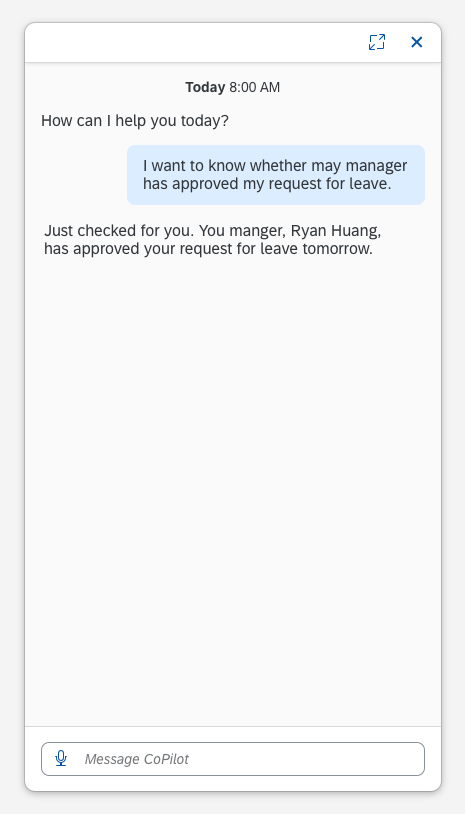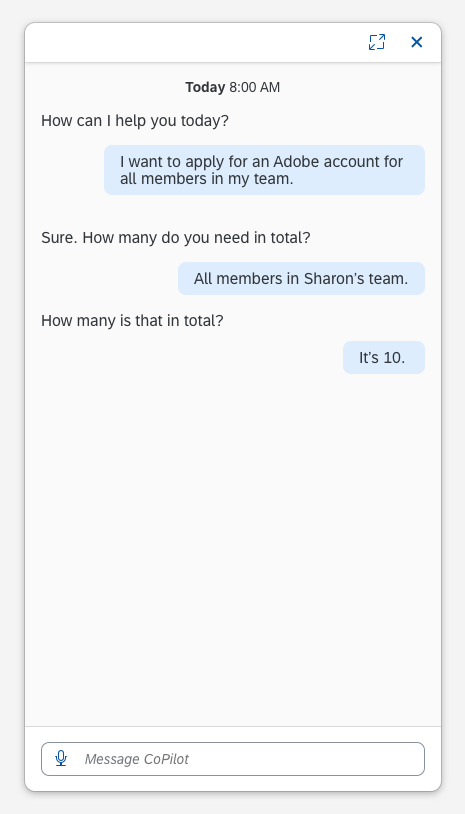Conversational Elements
Intro
Conversational elements are the parts that make up a conversation. In the context of conversational user experience, we break down a conversation into 3 stages: entry, turn-taking, and exit.
This section will give an introduction on these 3 elements.
Entry
Entry is the user’s first interaction with the agent. The purpose of Entry is to help the user learn what the system is capable of and what they can do to make use of those capabilities. It may also serve to give the user a general impression of how they can interact with the system by introducing tone and affect.

Turn-taking
Turn-taking is the back and forth between user and digital assistant. Turn-taking serves 4 types of purposes: Disambiguation, Guiding Users, Execution of Intent, and Error Handling.
Disambiguation
First, turn-taking serves for disambiguation, which means to clarify the user’s intention and clearly grasp what the user wants to do.
Guiding Users
Second, turn-taking can guide users, letting the user know what they can do. This aims to serve the user’s immediate and potential needs and is done by providing a proactive, suggestive experience, guiding the user, while ultimately giving them control.

Execution of Intent
Also, turn-taking serves as an execution of intent, which means to respond with what the user is looking for. This type of turn-taking involves the actual completion or confirmation of a completed request. This turn-taking lets the user know whether or not their need was met.

Error Handling
Lastly, turn-taking serves for Error handling, which means to help the conversation back on track when there is a misunderstanding between human and the digital assistant.

Exit
The third stage is the Exit stage. This is where the user either chooses to close the conversation or continue with a different set of tasks. The user can choose to exit whether or not the task was completed–they should always have that option anytime in the conversation.


